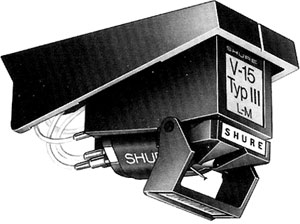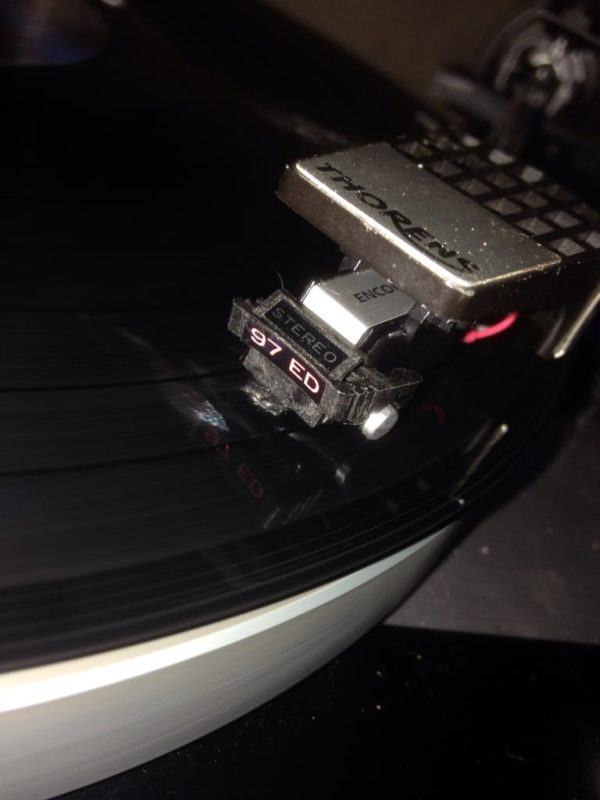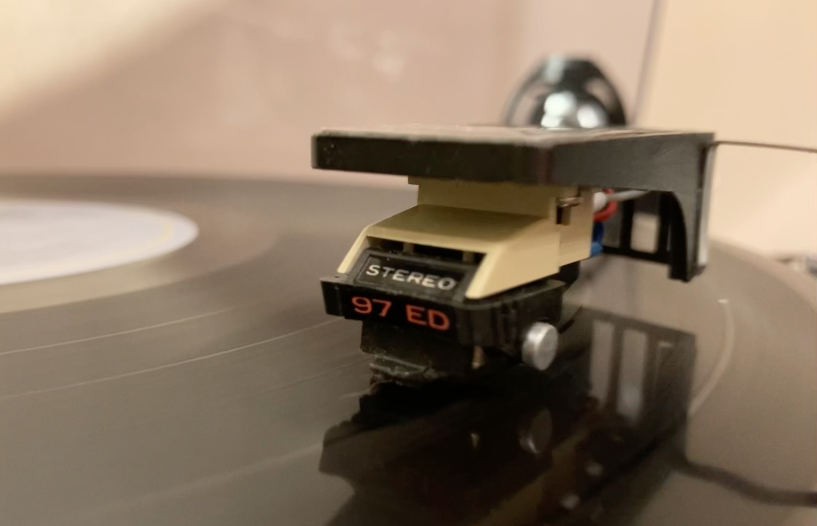 If my two and a half readers have followed my posts about turntable cartridges, they will have found them rather erratic. In one of them I admitted complete confusion. There are reasons to that. The first one is I had changed integrated amplifier, speaker cables and listening room in a short time period. I lost control on my overall sound so I was not sure what was going on. My few readers would know I am fond of Grado cartridges and the way the company is family-run in the old legendary labs in Brooklyn, NY. But I had some misfortune with my Grado styli and broke the two I had just when I had lost my job and could not spend money on that stuff. Something happened in that period that made me think twice about my favorite brand and caused some confusion in what I believed were my tastes. I found a Shure cart for free from a broken turnable.
If my two and a half readers have followed my posts about turntable cartridges, they will have found them rather erratic. In one of them I admitted complete confusion. There are reasons to that. The first one is I had changed integrated amplifier, speaker cables and listening room in a short time period. I lost control on my overall sound so I was not sure what was going on. My few readers would know I am fond of Grado cartridges and the way the company is family-run in the old legendary labs in Brooklyn, NY. But I had some misfortune with my Grado styli and broke the two I had just when I had lost my job and could not spend money on that stuff. Something happened in that period that made me think twice about my favorite brand and caused some confusion in what I believed were my tastes. I found a Shure cart for free from a broken turnable.
My first attempt with Shure came years ago, after I read an enthusiastic review on my favorite online Hifi journal. It was actually about Ed Saunders stylus replacements for the Shure V15xMR. I knew nothing about Shure carts at the time but what really made me curious was how that cartridge rendered the bass frequencies according to trusted reviewer. It is not just a case I have transmission line loudspeaker, I love deep and controlled, realistic bass in my system. The reviewer had transmission lines, too, at the time. So I was intrigued. I started my search for a V15 and found a cheaper model, a V15 III LM, the “Low Mass” version usually built for Dual turntables. I was excited! I bought an Ed Saunders stylus for it. When it arrived I had to wait for the weekend in order to test it. Meanwhile. my wife found the jewel case and wondered what it was. She opened it, thinking it was actually a jewel, and she dropped the stylus. At the time I didn’t think that could damage a stylus, but it is true for the diamond tip, not for the cantilever and relevant suspensions. As a result, I was not able to get much basses from the V15 in my system, plus, I had evident disturbing sibilants – unacceptable. I wrote Ed Saunders to see if he had any idea on how to set the VTF, etc…. We had already exchanged some messages because at first they had sent me an empty box by mistake. Ed was very kind and told me there should be something wrong in my setup, since with those parameters there shouldn’t be any sibilants. I did not claim a return because I was dubious about the stylus to be damaged. But I remained with the idea of a thin sound from Shure so I was discouraged, resold the V15 III including the stylus for free and that was it with me with Shure. So I thought….
I was to learn myself, sadly, how a stylus can be damaged by a fall. After I sold the V15 I used the money to buy a Grado 8MZ stylus replacement for my Prestige Gold. I was so happy with the sound that I was more convinced I didn’t like Shure. I was so amazed I wanted to try a Signature body with it and I bought an 8MX used. When I moved the 8MZ stylus from the Gold to the 8MX, excited to discover how it sounded, I dropped it! The bent cantilever was then straightened by the same nice guy who sold me the 8MX. But the suspensions were damaged: thinner sound, lower output level. So the Shure V15 had no faults. It was the dropped Ed Saunders stylus. But at the time I had lost my job. I could not buy anything superfluous. So I had to stick with my old Gold1 stylus for a while.
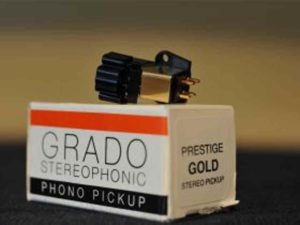
The original Grado Gold which I bought in 2005 came in with an 8MZ stylus already mounted. I had no idea and realized it only 15 years later….
One day a guy asked me if I wanted to have a look to an old turntable: they were cleaning up the basement of the nearby house and thought I could be interested to the turntable, otherwise they’d have junked it. I said yes, of course, sadly I had plenty of free time… It was a cheap Akai, not working and I could do nothing about it. Before putting it in the trash I noticed the cartridge had a cantilever stub, the rest, the tip, had snapped off. But there was “Shure” written on the label. I removed the cartridge and read the model name: “Me97HE”; “Encore” was also written on the underside. I knew nothing about it. I tried to mount it on my Thorens. I could not play anything, but the stylus stub made noise on both channels when touched, so the cart was maybe working. I measured it with a meter and it looked ok. So I tried to sell it. First I tried for 40 euros. Nothing. Then I did some research and I learned it was a replica of the more famous M97HE Era IV. At first I thought it was identical internally. Sure it was worth more than 40 euros so I doubled the price. I guy asked me to send him pictures and videos of me measuring it. I told him I measure it with a meter and it read ok, but he never replied.
At this point I started to look for a cheap stylus replacement that would at least allowed be to prove it was working, so I could sell it more easily. As I looked for the replacement and I found only expensive ones, I started to think maybe this cart was not as cheap ad the turntable I found it in. It took some time, but one day I found a Nagaoka replacement with lesser specs: a stylus with an elliptical profile, not hyper-elliptical like the cart was designed for (hence the HE suffix in its name). But it was highly affordable: 28 euros, shipping included. I didn’t care about the quality or mileage, I just needed to see if the cartridge worked while spending the least I could. When mounted the stylus on the cartridge I did not notice there was anything wrong. I would have learned later that that stylus was made for an original M97 body. The Encore (Me97) body was a replica but was different and the stylus outer shape would not fit perfectly. Anyway I mounted the cart on the Thorens TP16 tonearm and set it up. When it hit the record my jaw dropped. Maybe it was because I had been listening for some time with my Grado 8MX and a damaged stylus or a lesser Gold1 stylus. This sound was amazing. I could not believe it!
I wanted to know more. I started researching and I learned about the story.
The original M97 came when in 1978 Shure updated the M line. The top of the line was the M95HE and it was replaced by the M97HE Era IV, Shure’s 4th cartridge lineup. Shure made the M97 Era IV body so that several types of styli could be fitted, making it an M97ED if fitted with an elliptical stylus, M97HE if fitted with the hyper-elliptical stylus. At the time, Shure’s top model was the venerable V15 HE Era IV. The M97HE was the close second. In the 80s, Shure was in their Era V, when the V15MR-V was born, with a sophisticated beryllium cantilever and Micro Ridge diamond tip. The internal engine was the same as the M97, but the cantilever and tip were more advanced. Shure also thought about putting some cheaper cartridges on the market and revived the M97 line in a different body, built in their plant in Mexico. So the Me97 was born. The “e” stands for Encore, since they were more affordable replicas of their top cartridges of the Era IV. So that was why the cartridge I had found for free, that was about to be scrapped along with the cheap turntable it was installed on, sounded so good.
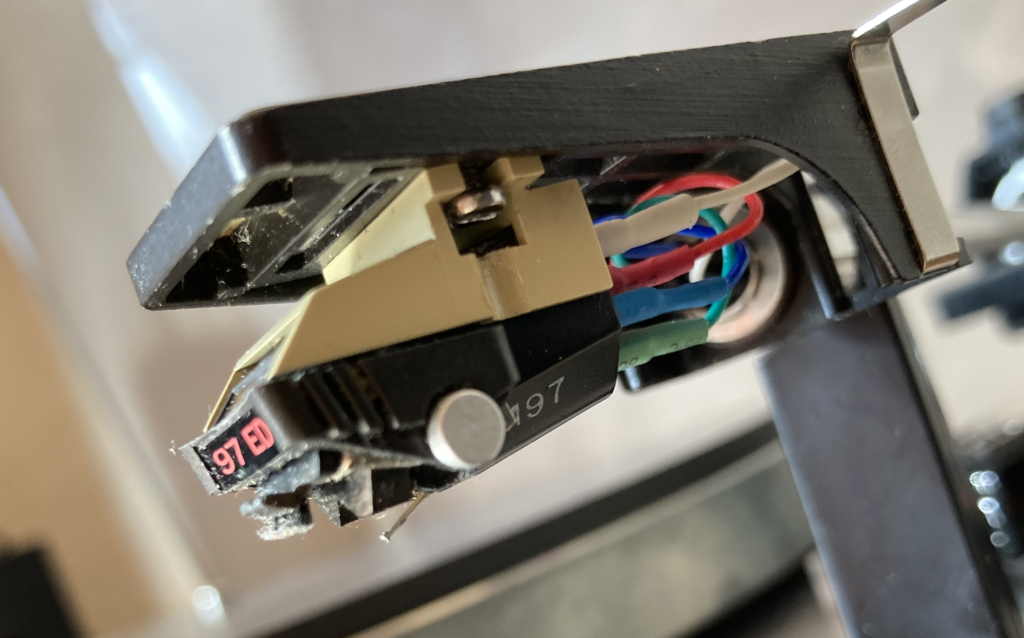
The Shure M97 Era IV body in my Thorens TP16 tonearm, fitted with the Nagaoka replacement stylus that makes it a Shure M97ED, with nude elliptical stylus and telescopic cantilever
But more researches I did, more I discovered about the M97 and M97HE. Shure cartridges until the Era IV were famous because of their flat response across the whole frequency spectrum. Mastering engineers loved them because of that. But some audiophiles had strangely begun complaining that Shure cartridges sounded too harsh. Many reviewers started criticizing listening fatigue. Therefore Shure thought about rolling off the top end a bit. It also saved them some money, since they stopped using finely laminated pole pieces in place of cheaper solid pole pieces that both attenuated some treble frequencies and lowered the production cost. The V15 became the V15xMR. The “x” designated the cartridges with solid pole pieces and consequent treble roll-off. So long for Shure’s famous flat response. The M97 was revived in the form of the M97xE. Shure was also forced to stop producing the V15 line because of the complications to keep producing toxic beryllium cantilevers with safety measures for the employees. So the M97xE became the top of the line. Shure also claimed it was superior to the old V15 and M97. How could it possibly be? I diminished frequency response, a lesser cantilever and a bonded elliptical tip instead of a nude hyper-elliptical? No way!
No wonder the M97xE was really cheap. A bargain, actually, because it was really a good cartridge. But not as good as its predecessors, as Shure wanted us to believe. More to that: some people bothered to compare electrical measurements on Shure different cartridge bodies. They found similar (better) values on V15 and M97 bodies from Era IV; plus, the measurements on the Me97 Encore bodies were similar to those for the M97xE bodies. So the Encore cartridge I found for free is more similar to the M97 that came after it than to the one Shure claimed it was a replica of! What a mess! No wonder Shure decided it was no longer productive keeping on making phono cartridges. Shure closed their cartridge department in 2018. The prices of the M97xE surged to unjustified values for its performance. Again, it has great performance and many like the treble roll-off that makes for a “warmer” sound. The bass is also really good. It’s just the elliptical stylus is not as refined as the nude hyper-elliptical one of the M97HE. The Japanese Jico company makes famous hi-end stylus replacements for Shure cartridges and the one for the M97xE bring it to the next level. The response can be brought back to flat, but keep in mind the pole pieces are still solid, not laminated like in the original M97.
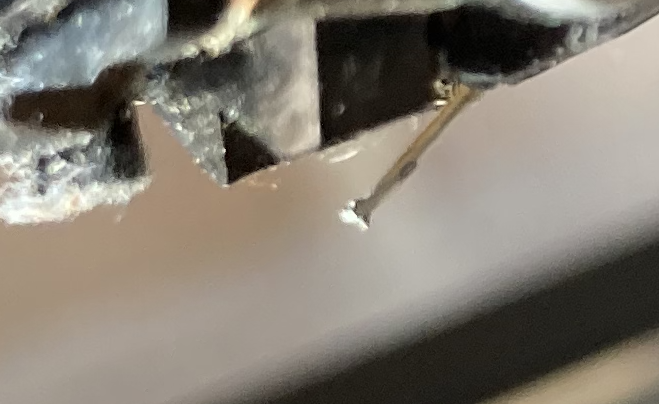
By zooming in the picture above you can see how I discovered, to my amazement, that the cheap replacement I bought a couple of years ago was actually a nude tip (inserted in the cantilever rather than glued beneath it) on a telescopic cantilever
For all those reasons I went on the market for an M97 Era IV body. Ironically, I found one at a very good price with an N97xE stylus included! The 70 euro used bundle sounded better than my 28 euro Encore+Nagaoka one. For a while I kept on listening to it as the main cartridge in my system. Then I wanted to try the Nagaoka on it. I just could not believe it! Even better! In comparison, the N97xE appears to roll-off the treble from the M97 Era IV, too! With the Nagaoka, the treble is back. It is still an elliptical tip but it sound great! Then I though about getting a closer look to the Nagaoka tip. To my complete amazement I discovered it was a nude tip! Also, like in the original one, the cantilever is telescopic! Now I see why the sound is so good! I can’t believe I bought this stylus at such a low price! In fact some rare ones are sold at three times that price!
